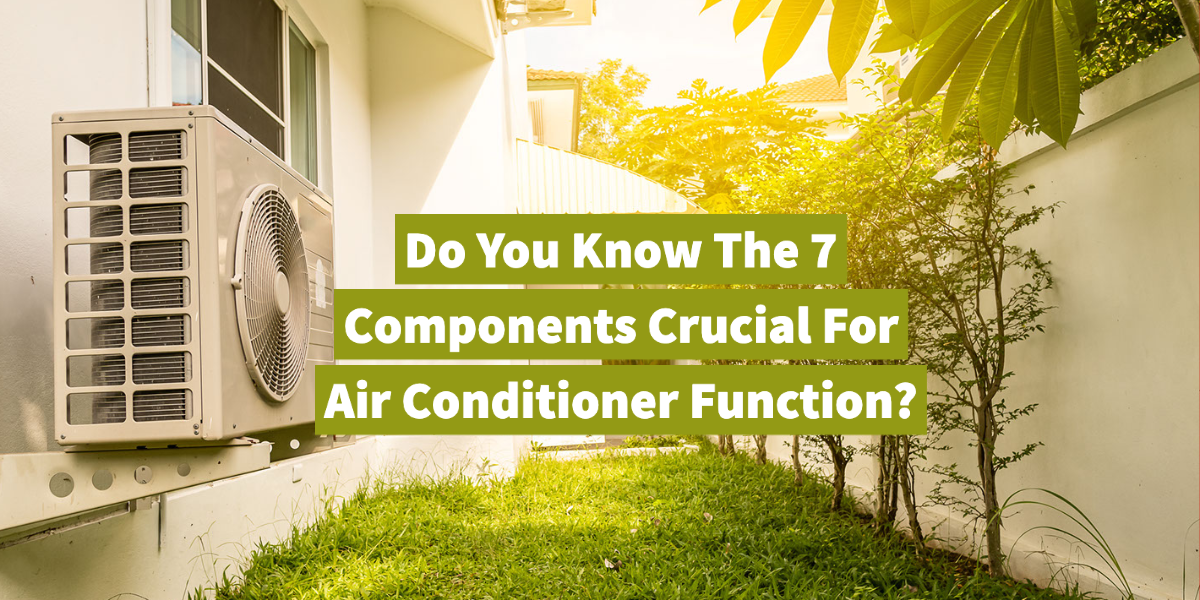Although most homeowners don’t give their residential air conditioning system much thought, especially if it is functioning correctly and keeping them cool, you should. Knowing what components make up your air conditioner may help you when things go wrong. If you’re unfamiliar with the elements that make up an air conditioner, our Canal Winchester Heating & Cooling HVAC experts can explain each one and why it’s necessary for the operation of your home cooling system.
Evaporator Coil
Evaporator coils are a key part of your air conditioner since they gather all the heat from your home and release it outdoors. The copper tubes in the evaporator coil collect liquid refrigerant, depressurized by the expansion valve. As a result, your home’s heat will be absorbed as the indoor air blows over the cold coils. Just as condenser coils require the assistance of a condenser fan to convey heat, evaporator coils rely on indoor air handlers for blowing wind over their surfaces. When the refrigerant absorbs heat from the air within your house, it evaporates and becomes a vapor.
Compressor
The compressor in your air conditioner compresses the refrigerant and raises its temperature. When you compress refrigerant, it warms up due to the combined gas law, which is made up of Charles’s Law, Boyle’s Law, and Gay-Lusaac’s Law. The refrigerant is warmed up to move out higher temperatures in the household to the outdoors. If you want to distribute the heat outside, the refrigerant must be hotter than the outdoor air; therefore, we need the compressor to boost pressure, allowing the refrigerant to become even warmer.
Condenser Coil
Condenser coils are typically positioned on the outdoor air conditioner unit, in contrast to the evaporator coils, which are generally found in the inside unit. The condenser coils transport hot refrigerant while the evaporator absorbs cold refrigerant. Condenser coils are designed to assist in heat transfer from the home’s interior to the outdoors. The refrigerant is cooled using a condenser fan that blows air over the coils, causing heat energy to be released into the outdoor atmosphere. As refrigerant changes from a gas to a liquid, it flows to the expansion valve once the temperature has been lowered.
Expansion Valve
As the refrigerant leaves the condenser in a liquid state, the heat has been removed, but the refrigerant is still far too hot to enter the evaporator coils. The expansion valve, located between the evaporator and condenser, plays an important part here. The expansion valve depressurizes the refrigerant. As a result, the refrigerant shifts from a liquid to a gas in the evaporator as pressure is removed, cooling it enough to enter back into the evaporator coils.
Air Filter
The air filters in your air conditioner remove dirt, germs, dust, and more from the inside air of your house. Air filter replacements should be performed every 1 to 3 months, depending on whether you wish to preserve the livelihood of your air conditioner or improve the indoor air quality of your home.
Refrigerant
Because we’ve gone over it a few times before, you’re undoubtedly wondering what refrigerant is if you aren’t already aware of it. Refrigerant is a fluid that conveys heat from the inside of your home to the outdoors via air conditioning technology. This substance is employed due to its ability to change form from liquid to vapor at suitable temperatures for refrigeration.
Refrigerant circulates through your air conditioner’s tubes and copper coils, linking the indoor and outdoor units. Heat is absorbed by the indoor unit, causing the refrigerant to change from a gas to a liquid, then carried outside to remove heat from your home. When the heat is removed from your property, the refrigerant inside will change shape and flow back into the indoor unit. This process will repeat as long as your air conditioner is switched on to keep your home cool and comfortable.
Thermostat
Because it is utilized to regulate the ideal comfort levels and temperature in your house, your thermostat serves as the control center for your air conditioner. Your thermostat will notify your air conditioner to function based on the temperature in your home versus the desired temperature you’re trying to achieve with your air conditioner, depending on your settings. Because thermostats have sensitive temperature and humidity sensors, it’s critical to put your equipment in a shaded location of your home.
Understanding your home cooling equipment is simpler than ever before! If you still have difficulties and require expert help with your residential air conditioner, contact our HVAC professionals today at (614) 524-4737, or schedule an appointment online now by clicking here!










